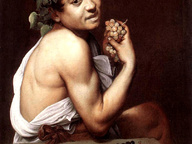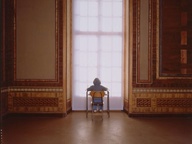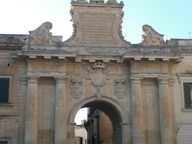Ritratto di Giova Uomo che legge una Lettera
Rosso was one of the most talented and unconventional Florentine artists of the early 16th century. He assimilated the innovations of Leonardo, Michelangelo andRaphael but went on to experiment with brilliant colours, a freer technique and more abstract forms. This is the earliest of very few known portraits by Rosso. It was produced in Florence, while the artist was active in the workshop of Andrea del Sarto. It reveals something of his eccentricity, particularly in the strange spiky fingers, the curiously abstract style and the characteristically swift way of working the paint. Although it is not signed, the distinctive manner in which it is painted is as good as a signature. The features of the face all but dissolve when viewed close up, but the sketchy brushstrokes blend into a powerfully convincing and memorable likeness when seen from a distance.
The sitter, as yet unidentified, glances up from a letter dated 22 June 1518.The letter bears further traces of writing which may yield clues to his identity. His gaze is at once dreamy yet also penetrating. This sense of psychological realism and immediacy was only just beginning to find a place in portraiture at the time the work was painted, appealing to the rising class of wealthy and intellectual patrons.
COMMENTI
LE OPERE
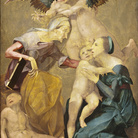 Allegoria della salvezza con la Vergine e il Bambi
1521 | Olio su tavola | 119 x 161 cm.
Allegoria della salvezza con la Vergine e il Bambi
1521 | Olio su tavola | 119 x 161 cm.
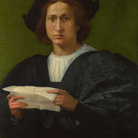 Ritratto di Giova Uomo che legge una Lettera
1518 | Olio su legno | 66 x 85 cm.
Ritratto di Giova Uomo che legge una Lettera
1518 | Olio su legno | 66 x 85 cm.
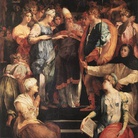 Matrimonio della Vergine
1523 | Olio su tavola
Matrimonio della Vergine
1523 | Olio su tavola
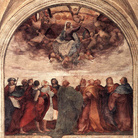 Assunzione
1513 | Affresco
Assunzione
1513 | Affresco
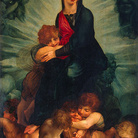 Madonna col Bambino
1522 | Olio su tavola | 75 x 111 cm.
Madonna col Bambino
1522 | Olio su tavola | 75 x 111 cm.
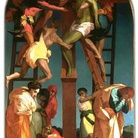 Deposizione sulla croce
1521 | Olio su tavola | 196 x 375 cm.
Deposizione sulla croce
1521 | Olio su tavola | 196 x 375 cm.
 Pietà
1537 | Olio su tavola | 159 x 125 cm.
Pietà
1537 | Olio su tavola | 159 x 125 cm.
Mappa
Opere in Italia
Opere nel Mondo
